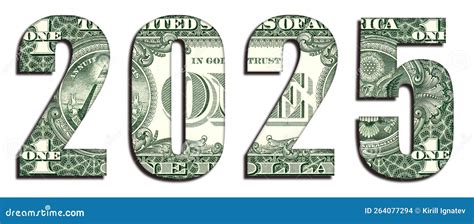Introduction
As the world’s dominant reserve currency, the US dollar has a profound impact on the global economy. Its value fluctuates constantly, affecting trade, investment, and consumer prices. This article will explore the factors influencing the value of the US dollar and its projected trajectory in 2025.

Historical Context
The US dollar has been the world’s leading reserve currency since the Bretton Woods Agreement in 1944. However, its value has not remained constant. In the 1970s, the dollar experienced severe devaluation due to high inflation and the Vietnam War.
In the 1980s and 1990s, the dollar’s value soared due to strong economic growth and the rise of the United States as a global superpower. However, the 2008 financial crisis led to a significant decline in the dollar’s value.
Factors Influencing the Value of the US Dollar
The value of the US dollar is determined by a complex interplay of economic, political, and social factors. These include:
- Interest rates: Changes in interest rates affect the demand for US dollars. Higher interest rates make the dollar more attractive to investors, leading to an appreciation in its value.
- Inflation: A high inflation rate can erode the purchasing power of the dollar, leading to a decline in its value.
- Economic growth: A strong economy tends to attract investment and increase the dollar’s value.
- Fiscal policy: The government’s budget surplus or deficit affects the availability of dollars in the market and can impact its value.
- Political stability: Political uncertainty can destabilize a currency and lead to a loss of confidence in its value.
Projections for 2025
Economists predict that the value of the US dollar will fluctuate in the coming years. Some factors that could influence its trajectory include:
- Federal Reserve monetary policy: The Federal Reserve’s interest rate hikes are expected to continue in 2025, which could support the dollar’s value.
- Economic growth: Continued economic growth in the United States and Europe could increase demand for the dollar.
- Global political risk: Political instability in Europe or emerging markets could lead to a flight to safety and an increase in the dollar’s value.
Implications for Businesses and Investors
The changing value of the US dollar has implications for businesses and investors around the world.
- Importers and exporters: Fluctuations in the dollar’s value can affect the cost of imported goods and the competitiveness of exports.
- Multinational corporations: Companies with operations in multiple countries must manage currency risk associated with the dollar’s value.
- Investors: Investors can use foreign exchange markets to hedge against currency risk and diversify their portfolios.
Tips and Tricks for Managing Currency Risk
Businesses and individuals can take steps to manage the risk associated with currency fluctuations:
- Use currency hedging instruments: Options, futures, and forward contracts can help protect against potential losses due to currency movements.
- Invoice in the local currency: When possible, invoice customers in their local currency to avoid exposure to foreign exchange risk.
- Monitor currency trends: Stay informed about economic and political factors that could affect the value of the US dollar.
Common Mistakes to Avoid
When dealing with currency fluctuations, it is important to avoid common mistakes such as:
- Overestimating the stability of the dollar: The dollar’s value can change rapidly and unexpectedly.
- Assuming future trends will continue: Past performance is not always an indicator of future results.
- Underestimating the impact of currency risk: Currency fluctuations can have a significant impact on profits and loss.
Current Status and What We Can Do
Currently, the US dollar is hovering around 100 against the euro, its highest level in 20 years. This is due to a combination of strong economic growth in the United States and geopolitical uncertainty in Europe.
Going forward, it is important for businesses and individuals to remain vigilant about the factors influencing the value of the US dollar. By understanding these factors and taking appropriate risk management measures, they can minimize the impact of currency fluctuations on their operations.
Table 1: Historical Value of the US Dollar
| Year | Dollar Index |
|---|---|
| 1973 | 100 |
| 1980 | 140 |
| 1990 | 100 |
| 2000 | 120 |
| 2010 | 80 |
| 2020 | 95 |
| 2023 | 100 |
Table 2: Factors Influencing the Value of the US Dollar
| Factor | Effect |
|---|---|
| Interest rates | Higher rates increase demand for the dollar. |
| Inflation | Higher inflation erodes the purchasing power of the dollar. |
| Economic growth | Strong growth increases demand for the dollar. |
| Fiscal policy | A budget deficit increases the supply of dollars. |
| Political stability | Uncertainty can lead to a loss of confidence in the dollar. |
Table 3: Projections for the Value of the US Dollar in 2025
| Scenario | Dollar Index |
|---|---|
| Base Case | 105 |
| Optimistic Case | 115 |
| Pessimistic Case | 95 |
Table 4: Tips for Managing Currency Risk
| Tip | Description |
|---|---|
| Use hedging instruments | Options, futures, and forward contracts can protect against losses. |
| Invoice in the local currency | Reduce exposure to currency fluctuations. |
| Monitor currency trends | Stay informed about economic and political factors. |


